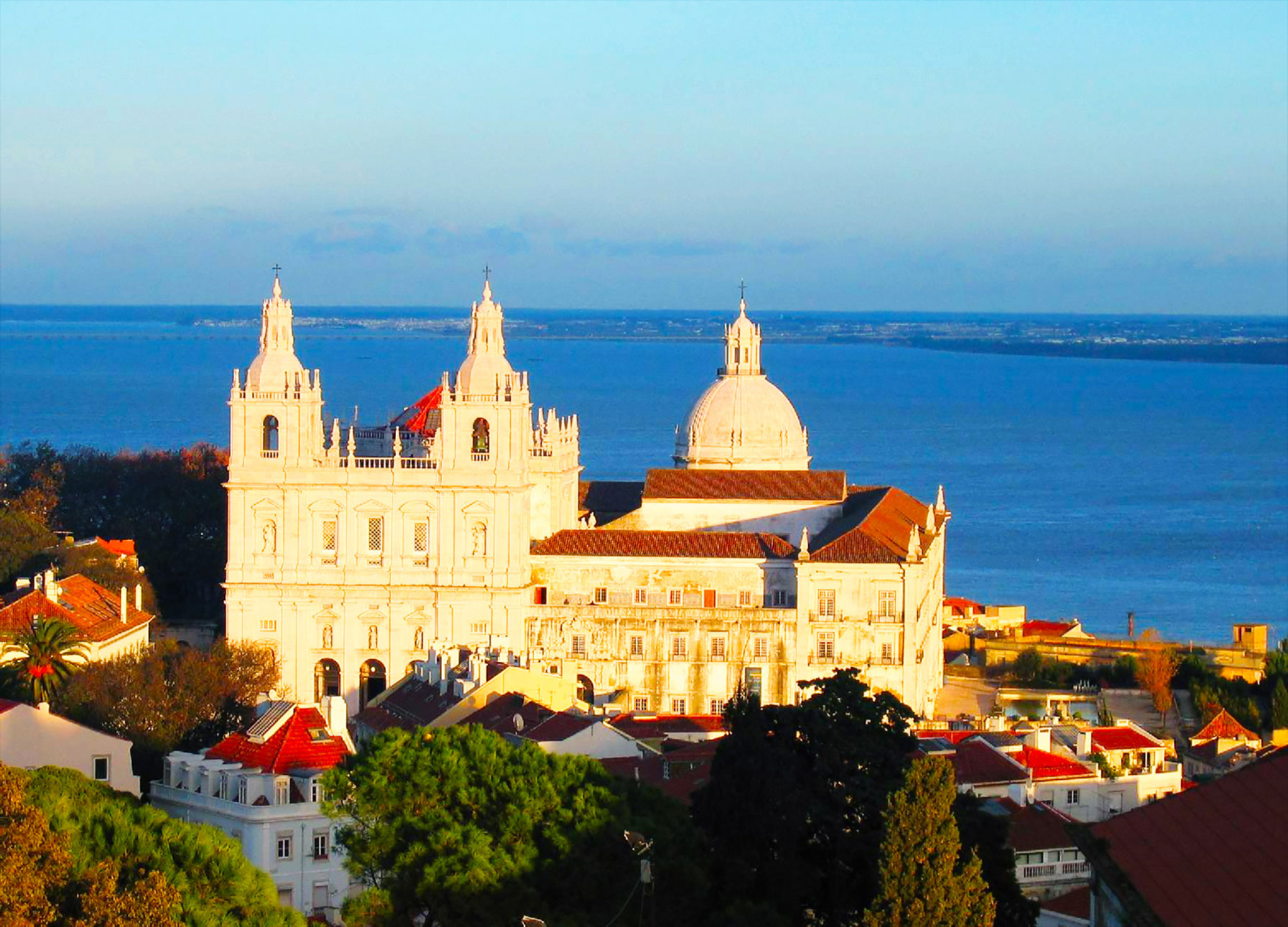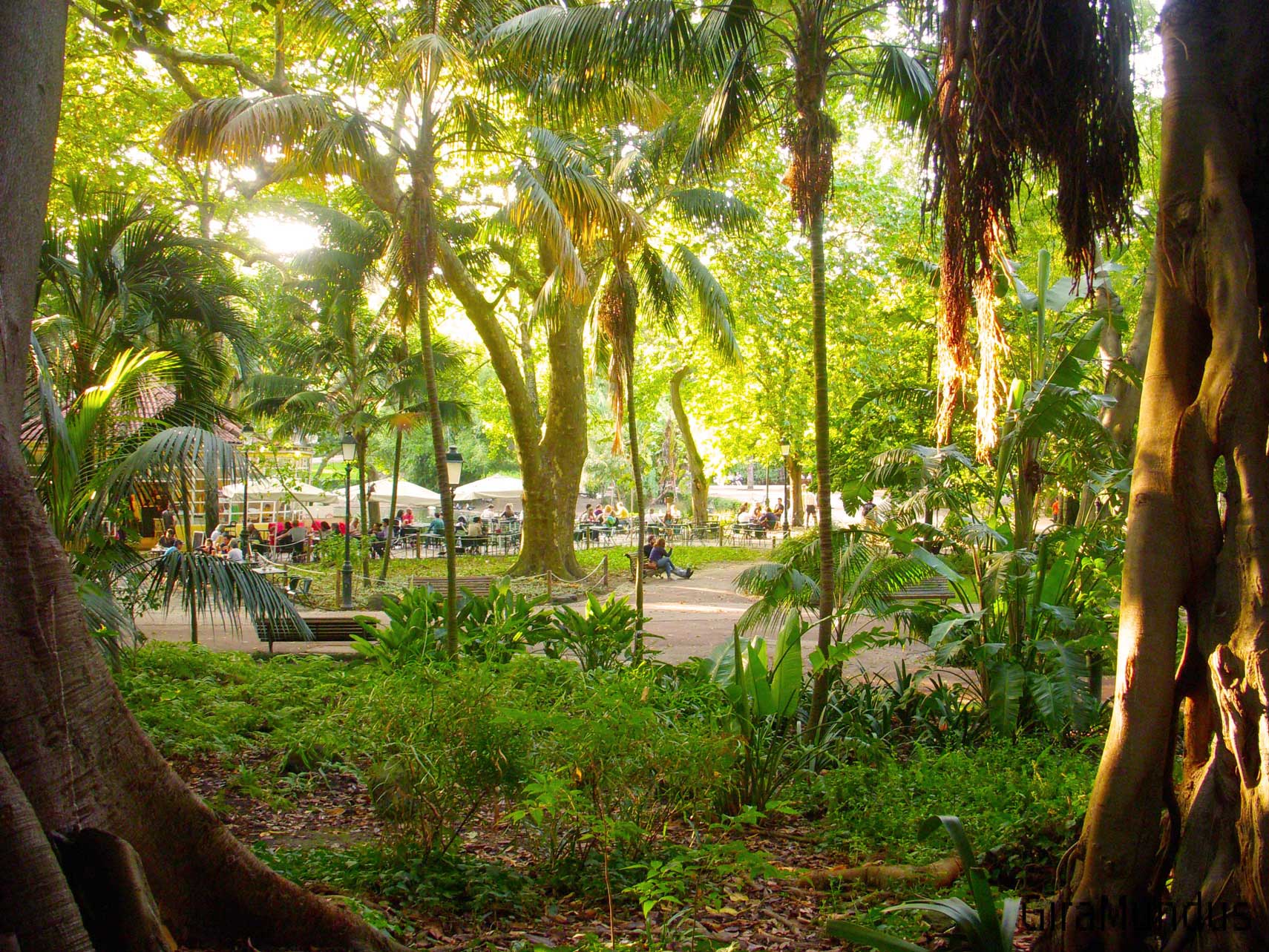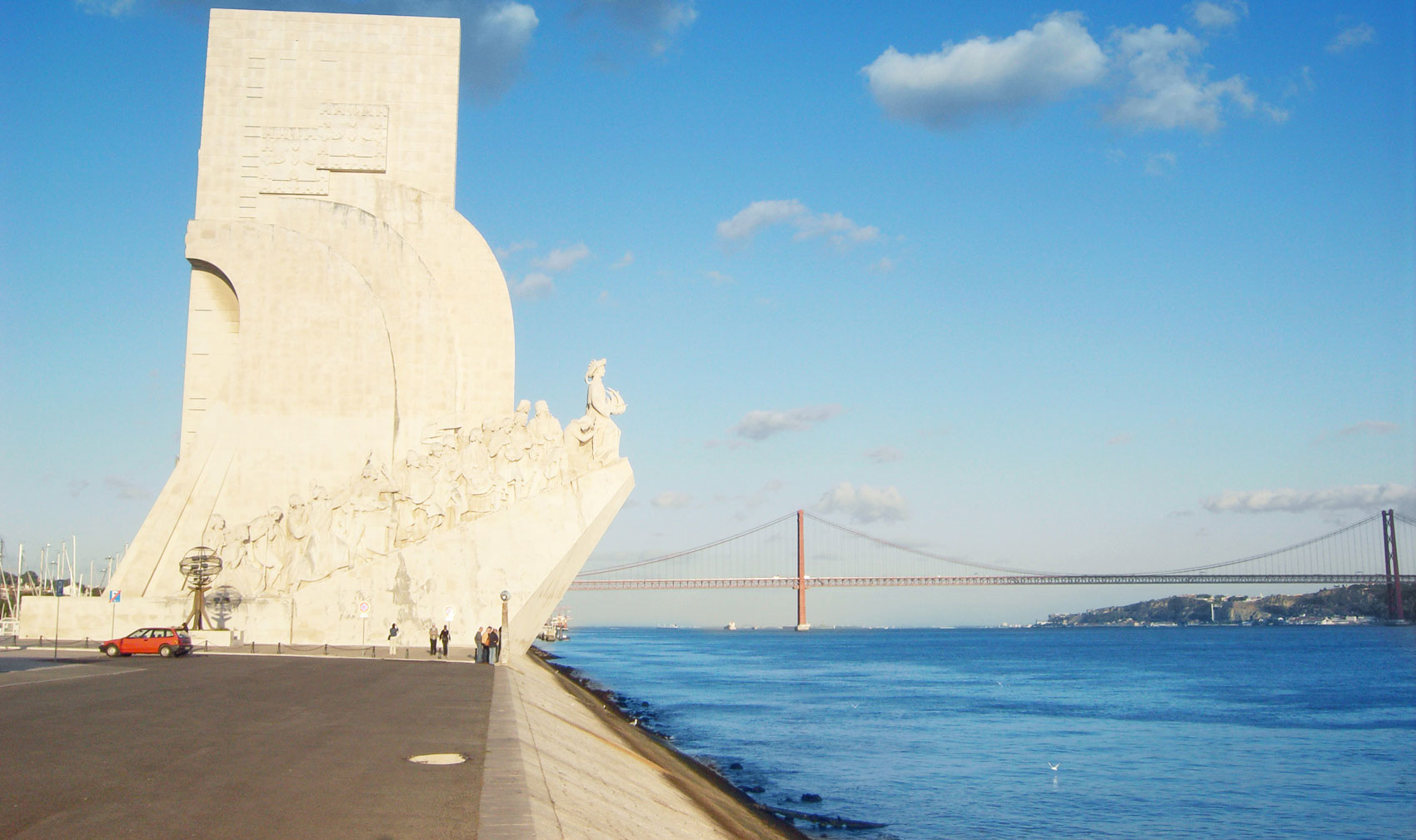Lisbon is Out There!
-


To fully enjoy Lisbons’ spectacular views (if you love it as much as we do, it’s a MUST!), we strongly recommend that you check osut the bars with the best view in town. Not to be missed as well a cruise on the Tejo river which will for sure be a unique experience. Sunset is normally the best hour for any of the suggestions below, as are full moon nights.

-


Lisbon's beautifully scenic waterfront location in a series of hills seduces anyone into pausing for contemplation. It not only makes it a highly romantic city, but also a place that forces you to take things slowly. While the most breathtaking views are from the castle, there are several terraces which stand as viewpoints where tourists and locals all gather for a break. They are an essential part of the Lisbon experience, and relaxing to take in the views at one of them is a must. Many have kiosks serving refreshments, while others are simply the top of the city's most iconic landmarks. Wherever you are in the city, there is a ´miradouro not very far away. These are the ten best:

-


In Lisboa there are plenty green areas: from urban, recreational and farm parks, to public and botanic gardens. Be it along the riverfront, in the heart of the historic and ancient quarters, or in the viewpoints over all of downtown, there is always a bigger or smaller green spot to visit at random or in walking tracks. On foot or by bike, alone or with friends and family, following the bike lanes, cross forests, parks and gardens, or choose to go along the riverfront from Belém to the Parque das Nações.

-


To discover the real beauty and the charm of Lisboa, be it by day or by night, you can´t skip one of the sightseeing tours by tram, funicular or lift. Wind your way through the hills of Lisbon and discover its most historic quarters, where people chat from their window ledges and clothes hang out to dry in the sun. The contrasts in this richly diverse city will amaze you.

-


City of history and culture, Lisboa is a restless city that rises in a maze of alleys and narrow streets from the river to the Castle, partnering the Tagus. Monuments and Art are central to Lisboa DNA, which offers its visitors an extremely rich architectural heritage both secular and religious with a large number of museums, churches, monasteries and palaces that you must visit while in Lisboa.


-
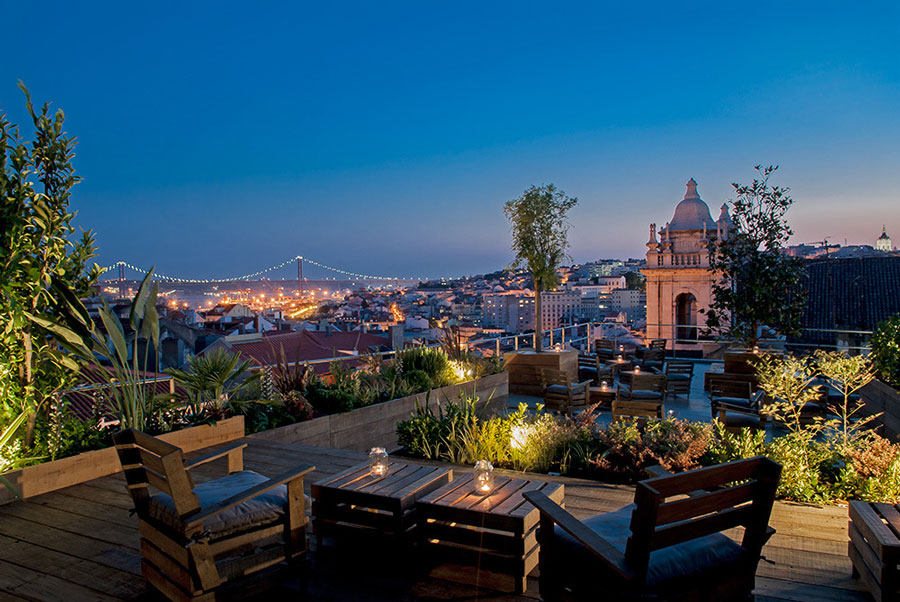
Park Bar
At the top of the car parking building at Calçada do Combro, right by Bairro Alto, Park Bar is an esplanade bar full of attitude and also altitude!
The terrace of the parking building, with approximately 500m2, opened its doors in July 2013 with a suspended garden ready to welcome anyone willing to enjoy the city view in a relaxed environment listening to the best jazz, soul and funk, by DJ Tiago Santos, local radio DJ at Oxigénio).
Opening hours: 1pm -2am everyday
Address: Calçada do Combro, 58, 1200 -

Silk Club
In the heart of Chiado, offering its guests an excellent panoramic view of the city from the top of a building that sits on the former Fernandine Wall of the Portuguese capital.
Occupying the top floors of the Chiado Building, it allows us to appreciate the numerous monuments and the Tagus river, from the Castle of São Jorge to the area of Belém.
Silk is a very coveted area of the capital, both to relax in daylight as at night. The experience is exclusive to club members or guests.
Opening Hours: Tuesday to Saturday from 22:30 to 04:00 (with last admission at 02:30)
Address: Rua da Misericórdia 14 6º andar, 1249 - 038 Lisboa -
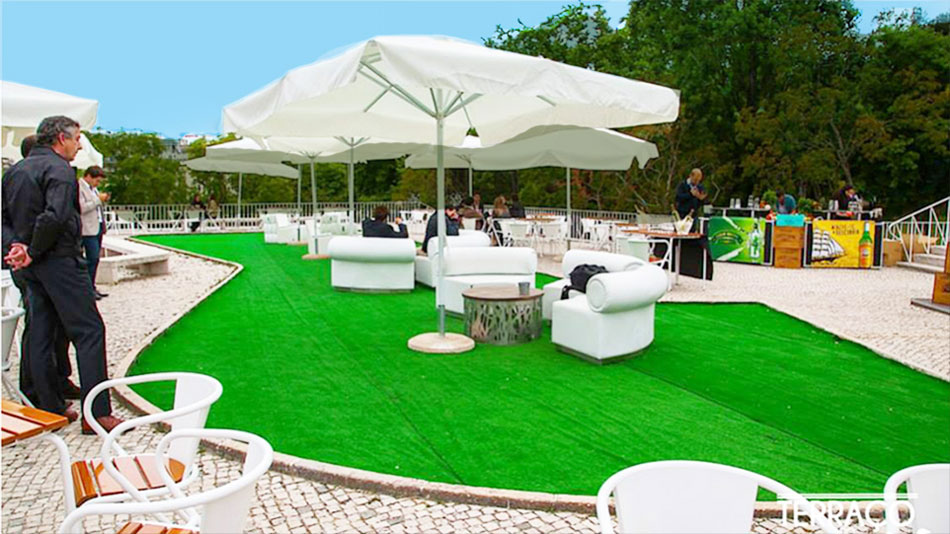
Terraço do Marquês
The Terrace of the Marquês makes its purpose clear in its name: to offer a moment of relaxation on a terrace overlooking the city, more exactly the Marquês de Pombal statue and Eduardo VII Park.
Opened in late May 2014, the terrace is intended to be a cosmopolitan space, available to receive guests with sunset parties, football matches or even theme parties and DJs.
Opening Hours: Sunday to Wednesday from 10:00 to 00:00; Thursday to Saturday from 10:00 to 02:00.
Address:Av. Sidónio Pais, 1, Parque Eduardo VII, 1190 Lisboa -
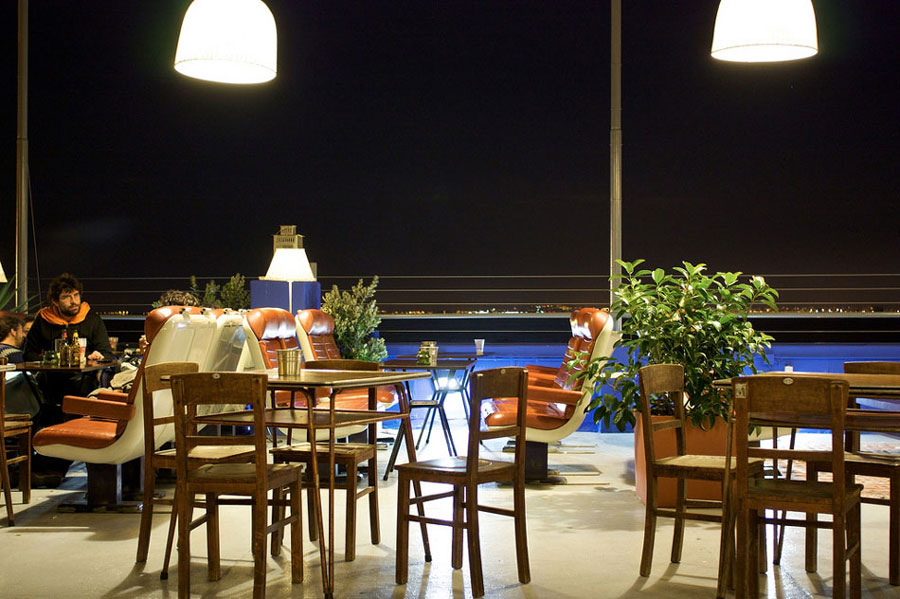
Clube Ferroviário
The Clube Ferroviário (the “railway club”) has transformed the outskirts of Santa Apolonia Train Station in an authentic "platform” " for the comings and goings of party and culture-minded people. The range of offerings at this club is impressive, from theme parties, to outdoor cinema, concerts, DJ sets, exhibitions, performances and other cultural activities are always available for visitors.
Divided into two floors, the club has two bars, two lounges for shows – called the TGV and the Railway - but the real attraction is the terrace upstairs with its stunning view over the Tagus and old train benches.
Opening Hours: Wednesday from 18:00 to 02:00, Thursday and Friday from 18:00 to 04:00, Saturday from 16:00 to 04:00, Sunday from 16:00 to 02:00.
Address: Rua de Santa Apolónia, 59, 1100 Lisboa -
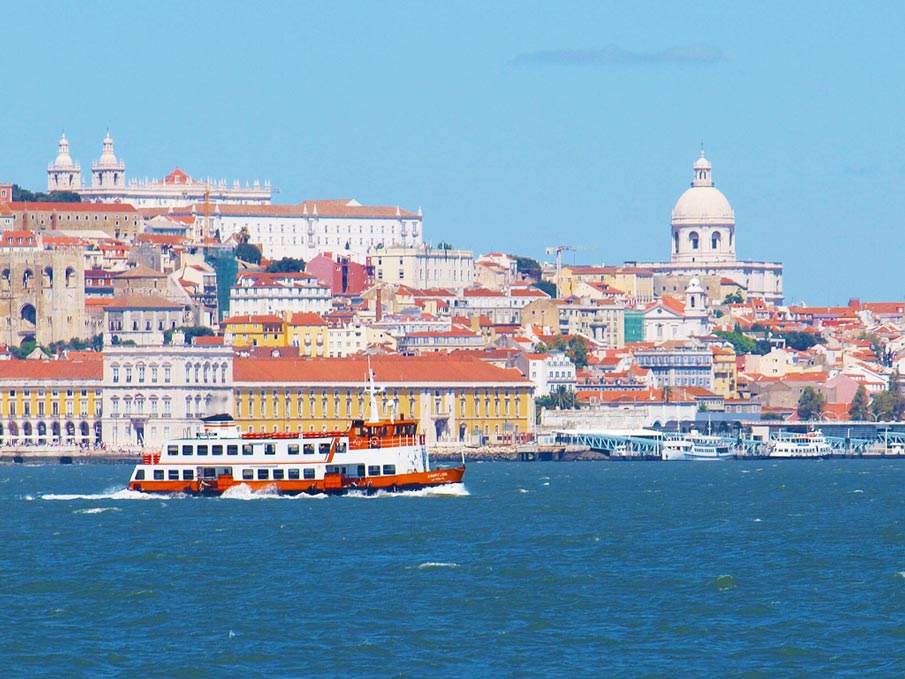
"Cacilheiro" ride on Tagus river
Discover the beauty of Lisbon from a different point of view - from the Tagus River! On a typical, comfortable boat currently used as transportation means for many inhabitants of the south margin of the city.
You can enjoy panoramic views of the Parque das Nações, in the modern part of Lisbon where the 1998 Universal Expo was held, and the outside of the Oceanário (Lisbon´s aquarium). Admire views of Castelo de São Jorge, São Vicente Monastery and all of the city neighborhoods, namely the beautiful southern part of Bairro Alto and Alfama.
You can also get a view of the Belém district, see the Monument of the Discoveries, which commemorates Portugal´s important role in the discovery of the Americas, and the UNESCO World Heritage Sites of Jerónimos Monastery and Belém Tower. Enjoy plenty of photo opportunities! -
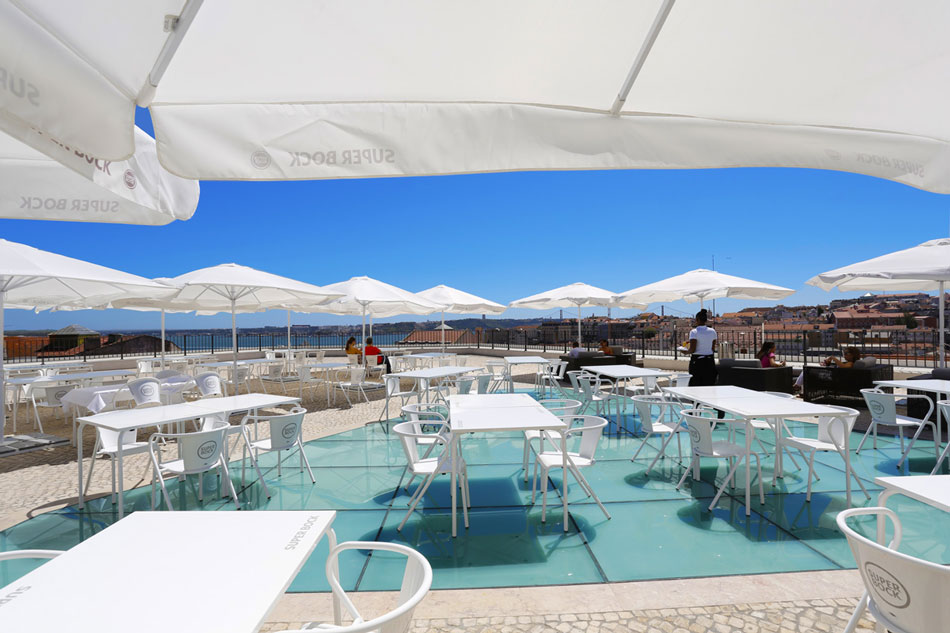
Zambeze
Located in the historic center of Lisbon, between Largo do Caldas and Castelo de S. Jorge, the Zambeze Restaurant offers a superb view over downtown Lisbon and the Tagus.
Housed on the top floor of the old Market Chão do Loureiro building, now restored and transformed into a modern multifunctional Parking, the Zambeze recovers the best culinary tradition of a Portuguese northern region (Beiras) recreated in its presentation, and an amazing fusion with African flavors.
The décor boasts many iconic elements of Portuguese culture, including Bordallo Pinheiro stoneware art pieces inside, two panels of tiles by the artist Paul Ossião on the outside. The restaurant is complemented by a terrace of 300 m2. The ideal choice for a late afternoon meal appreciating the splendid views, in a cosmopolitan, modern and relaxed environment.
Opening Hours: 10am to 23h every day -
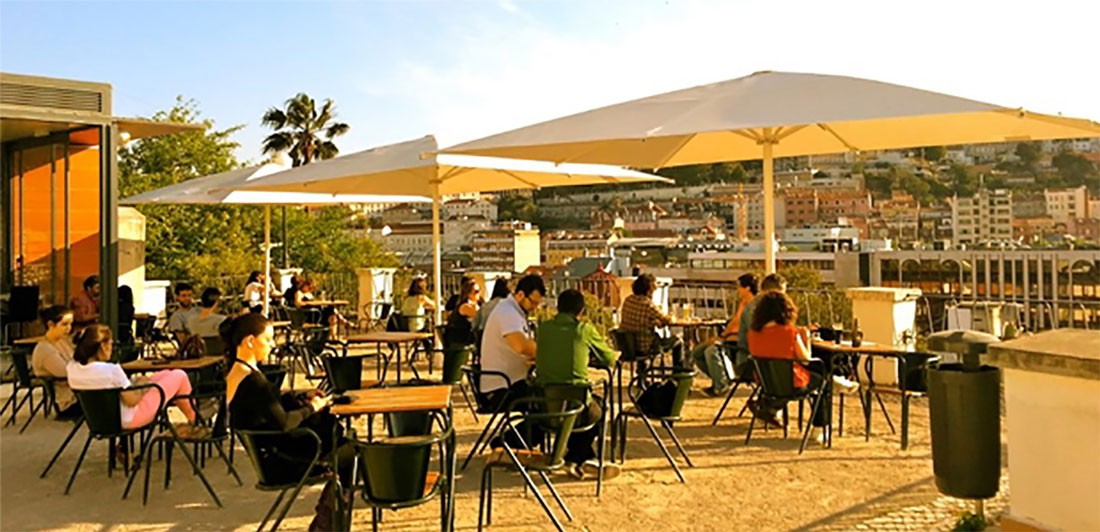
Jardim do Torel
It’s one of the most interesting and unknown green spaces in the city. It’s a nineteenth century romantic garden that has a large number of flowers and quiet corners.
With a privileged view over the Avenida da Liberdade and its western slope, where the Miradouro de S. Pedro de Alcantara stands, also covers an interesting view of the Baixa and the Tagus River.
Apart from some statuary, the Garden has benches and loungers for people to rest and enjoy the landscape and the quietness of the place. Since January 2010 it has a kiosk with a terrace, serving wine, snacks, light meals and a bar service. -
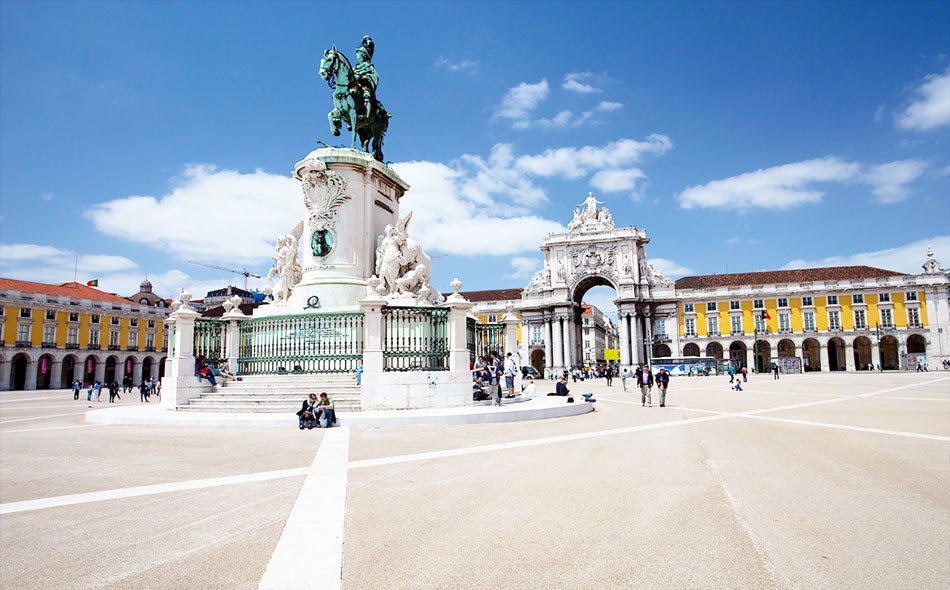
Praça do Comércio and Rua Augusta Arch
Also known as the Terreiro do Paço, the Praça do Comércio is one of the most majestic squares not only of Lisbon but of the world with about 36.000m² (180m x 200m). The fact that it’s situated in front of the Tagus is its element of originality in relation to most European squares.
Classified as a National Monument, the Plaza consists of arcades with medieval decorations, and flows into an old pier, recently restored, where you can enjoy the most amazing views of the city - either heading towards inland or the river and the south bank.
The top of the Arch of Rua Augusta also offers a remarkable panoramic view over Lisbon, and can be visited along with the hall vaults housing the existing machinery of the clock there. This way, visitors can have a full perception of one of the most emblematic squares of the city from different points of view.
Opening Hours: Open daily between 9am and 19h. -
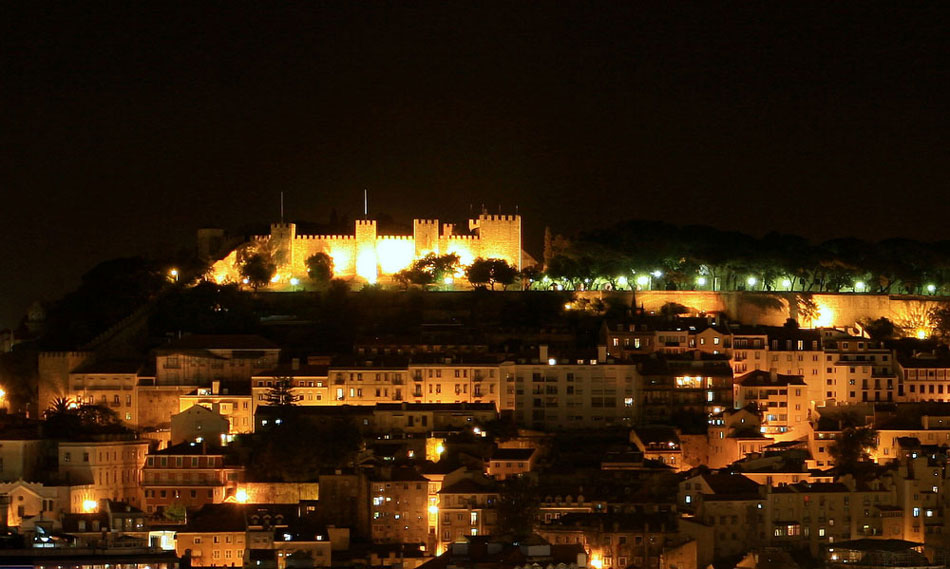
São Jorge Castle
Declared a National Monument in 1910, the São Jorge Castle stands on the highest hill of Lisbon and was from very early stages a privileged space to gaze over the city in its splendor.
The monument offers visitors several gardens and viewpoints that can be a good starting point for a deeper knowledge of the city of Lisbon.
Opening Hours:
09h00 - 21h00 (Mar to Oct)
09h00 - 18h00 (Nov to Feb)
Last admission: 30 minutes before closing time

-
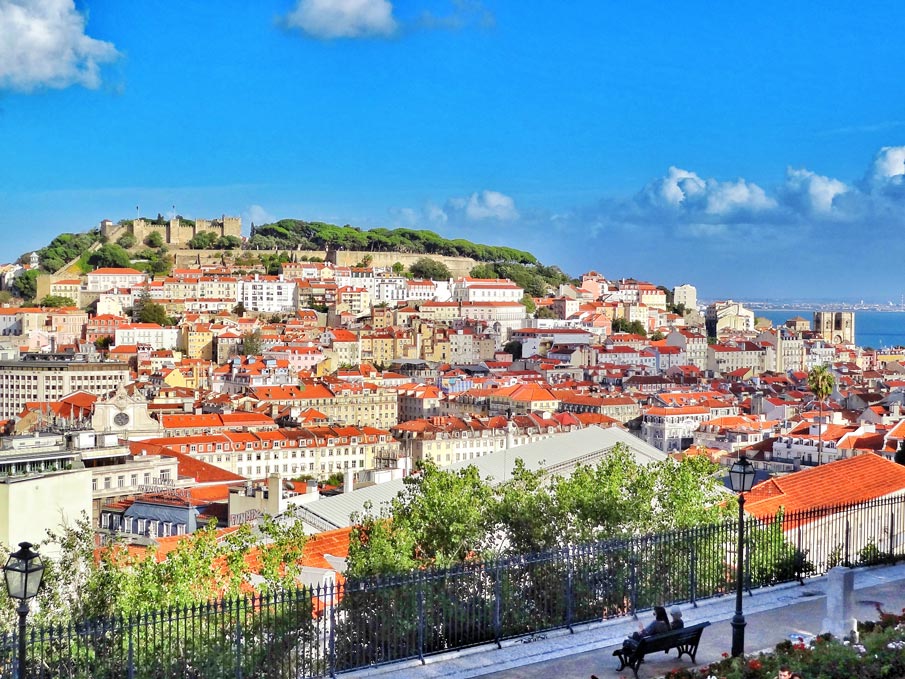
1 - S.Pedro de Alcântara
This shaded terrace on a hill directly across from the castle allows you to gaze down on all of downtown towards the river.
It´s also one of the most romantic spots in the city. -
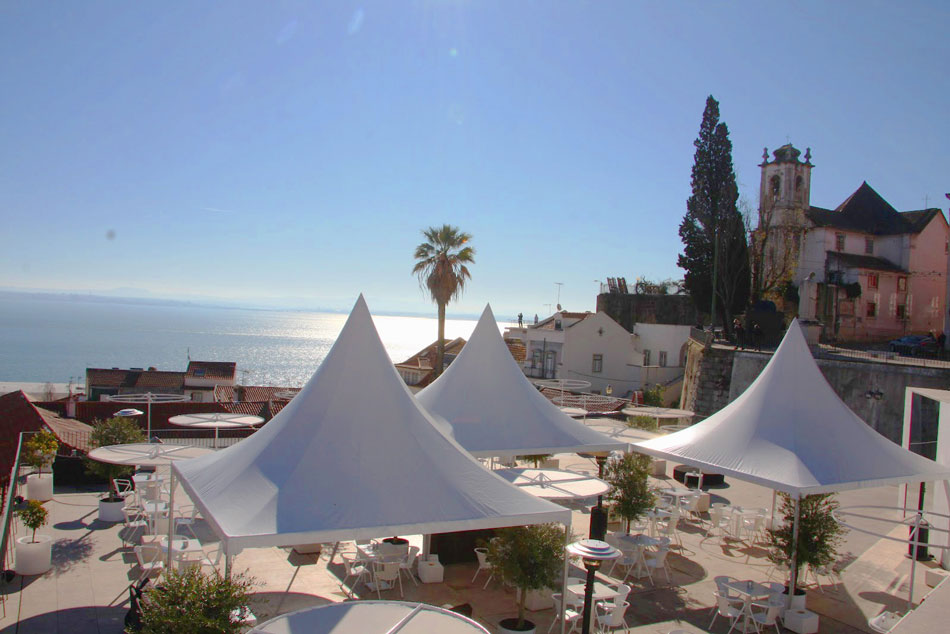
2 - Portas do Sol
Found not far from the castle, this terrace offers the best postcard views (and photo opportunities) of Lisbon.
It overlooks the domes and rooftops of the city’s oldest historical district and the river. -
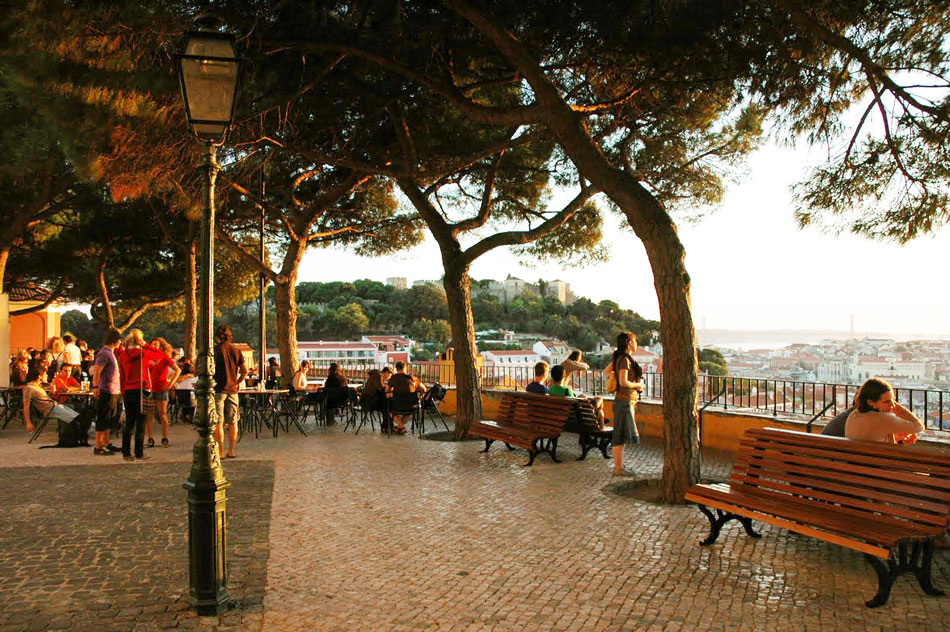
3 - Graça
This seems to be the favorite vantage point for artists to paint the city.
With a kiosk café and views of the castle, it is also a popular meeting point, mixing locals and tourists. -
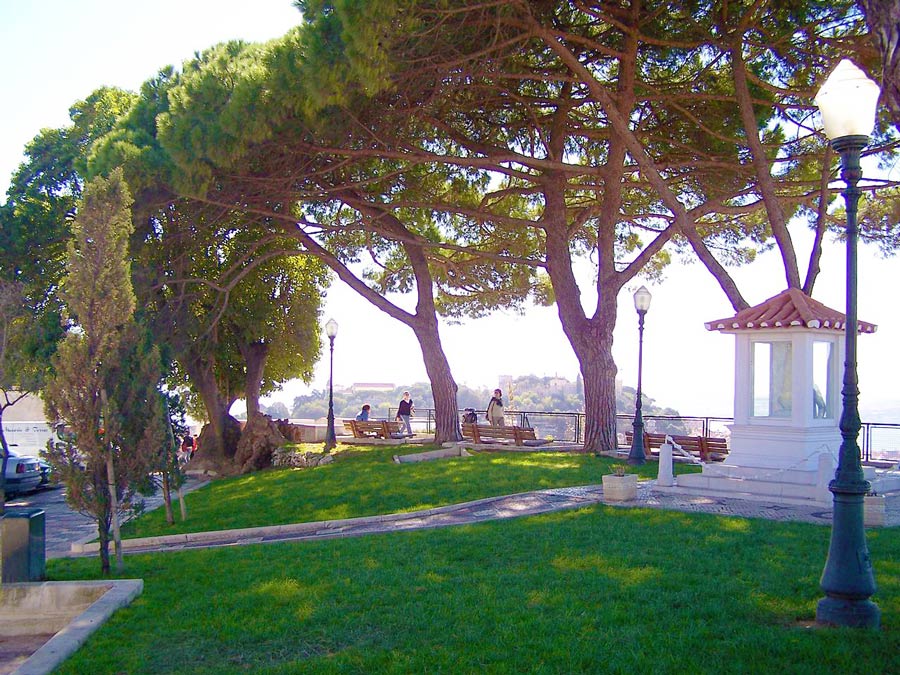
4 - Senhora do Monte
You can get a panorama of almost the entire city from here, but not too many people seem to know that.
The only company you´ll likely have here is one or two young couples. -
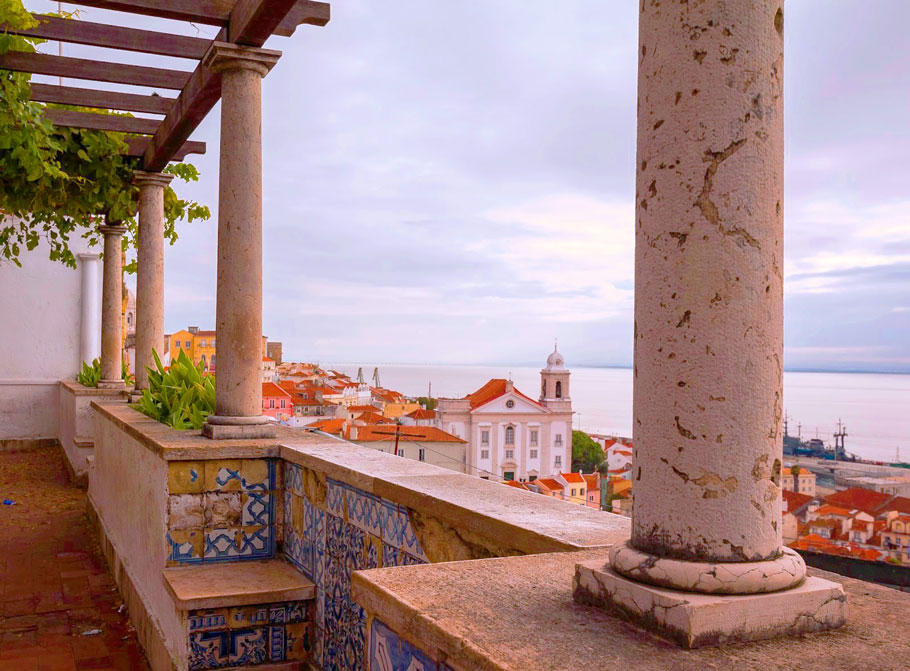
5 - Santa Luzia
You can look over the terracota rooftops of Alfama and the river from this incredibly charming terrace, always filled with tourists snapping photos.
-
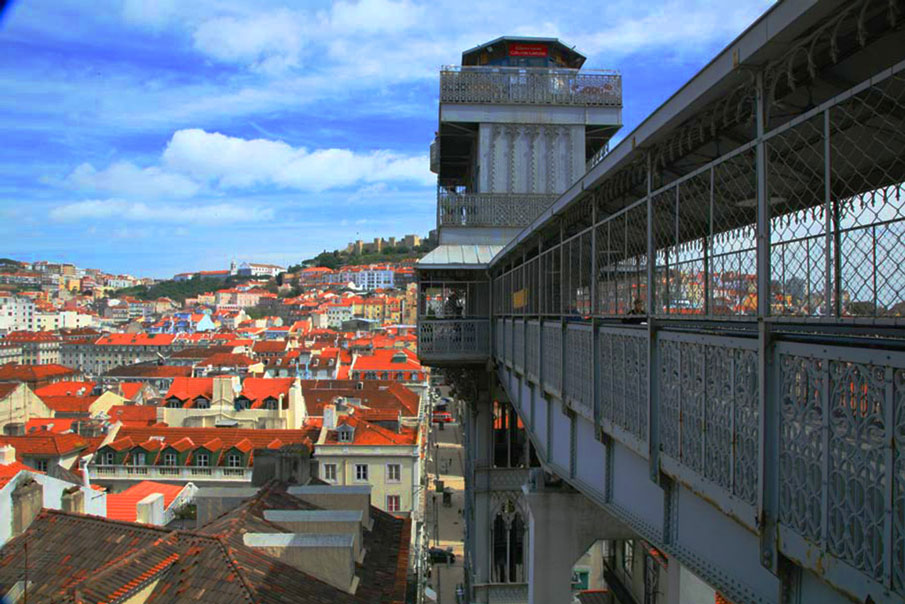
6 - Lift of Santa Justa
From the top of this monument are bird´s-eye views of old town.
No visitor to the city should miss it, except those who suffer from vertigo, as you´ll feel like you´re literally standing above Lisbon. -
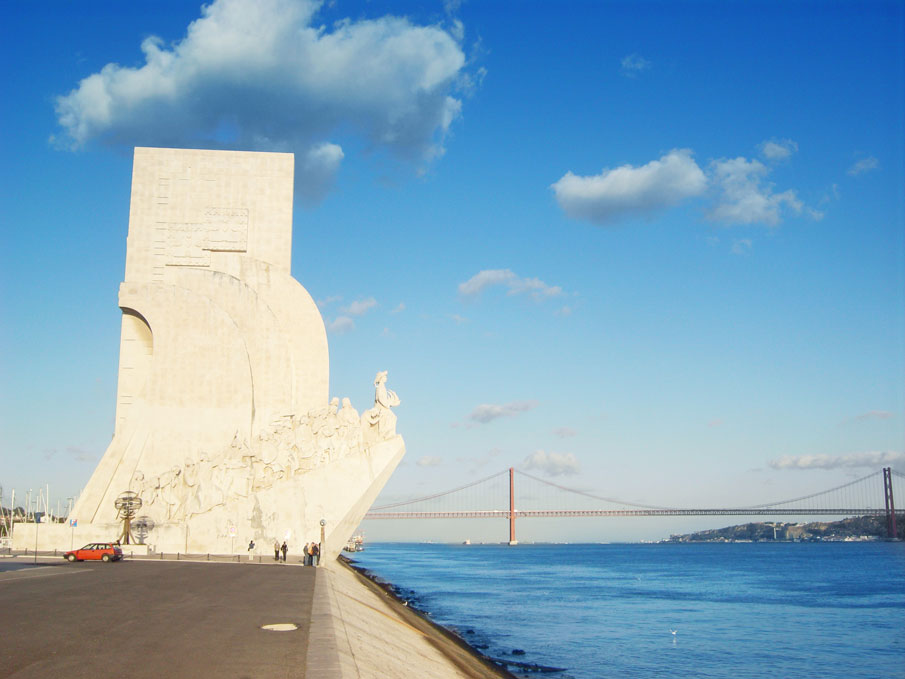
7 - Padrão dos Descobrimentos
Lisbon´s most monumental architecture can be admired from the top of this monument, standing on the spot where Vasco da Gama left for his world-changing voyage to India.
Be sure to look down to see visitors standing on the top of the world (a map on the pavement illustrating the routes of the Portuguese explorers). -
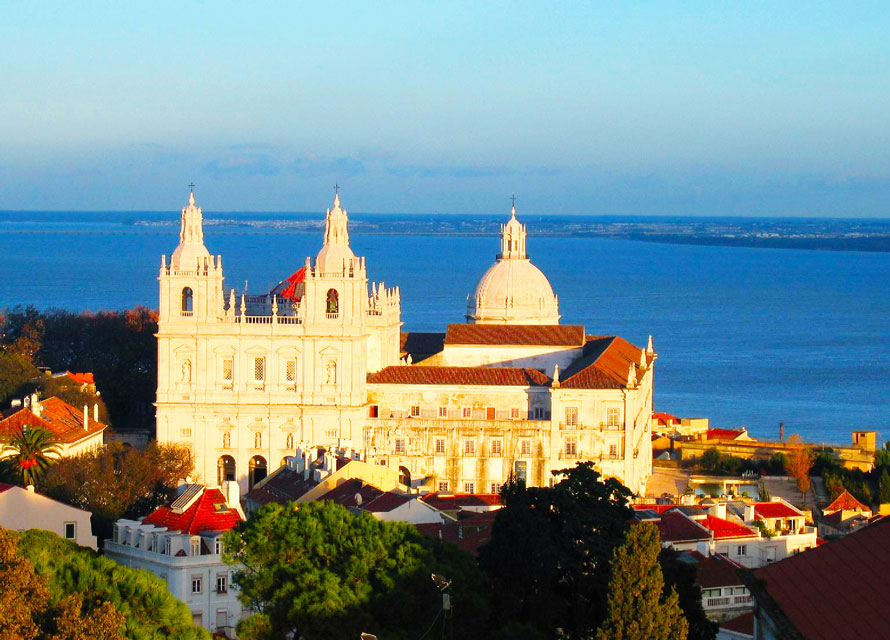
8 - Most of São Vicente de Fora
Very few people are aware of the fantastic city views from the rooftop of this monument.
The domed National Pantheon stands right below it, and you can look out over Alfama to 25 de Abril Bridge. -
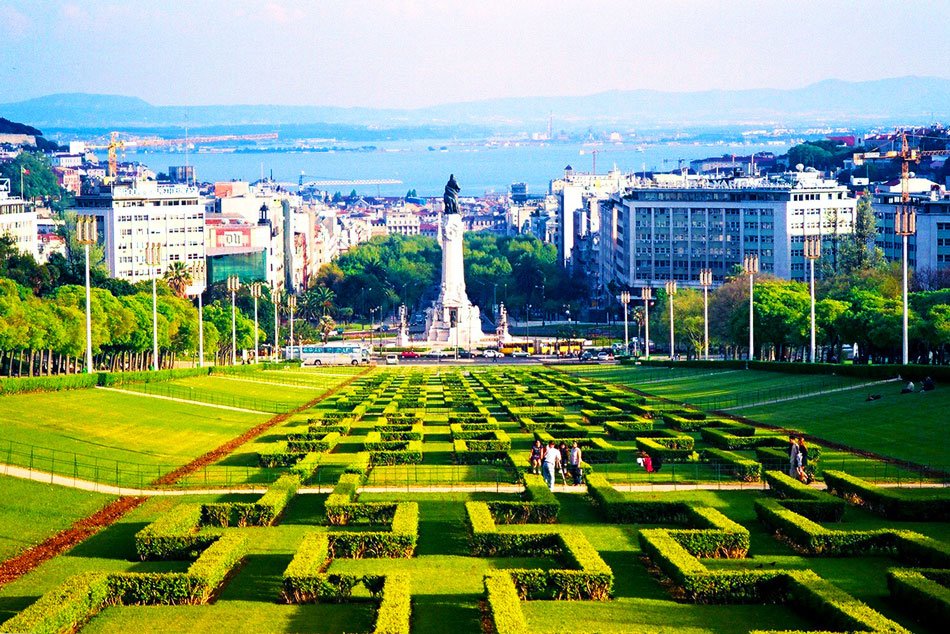
9 - Eduardo VII Park
All of downtown Lisbon built between two hills can be seen from the top of this sloping park. With a view of the castle and the river, this is a picture-perfect spot.
-
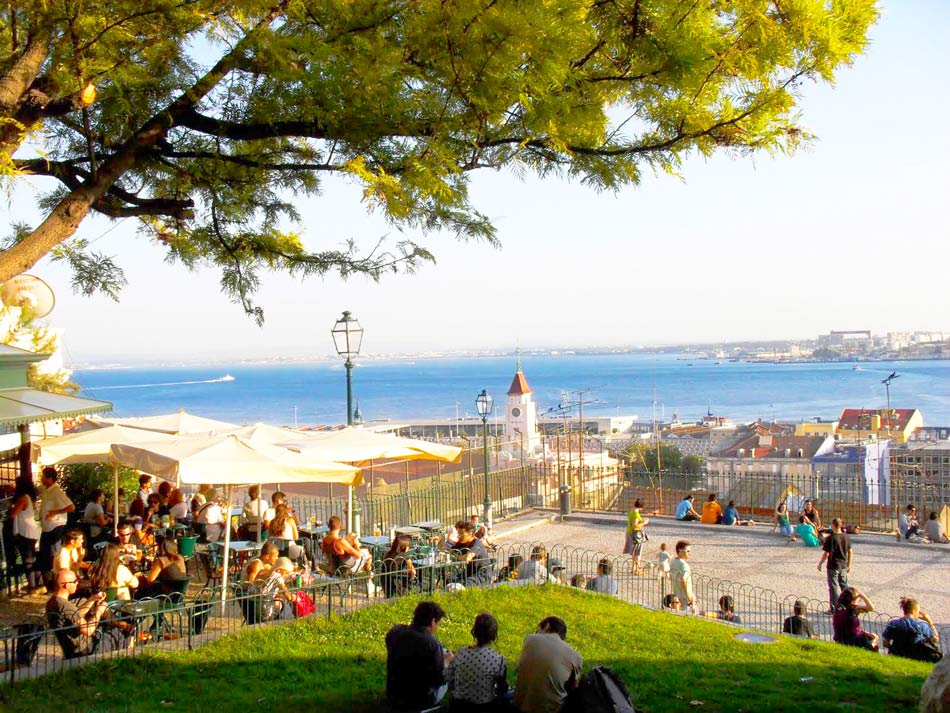
10 - Santa Catarina
The port of Lisbon and the landmark 25 de Abril Bridge are seen from this terrace, where you can also sit and watch the cruise ships passing by.

-

Lisbon Zoo
With one of the finest collections of animals in the world (about 2,000 animals representing over 330 different species), housed in enclosures s increasingly close to the animals’ natural habitats, the Lisbon Zoo is an important and attractive recreational / educational space that combines a strong education component to entertainment and fun.
The park features a vast array of attractions that provide visitors of all ages with fun and unforgettable memories of a day well spent. -
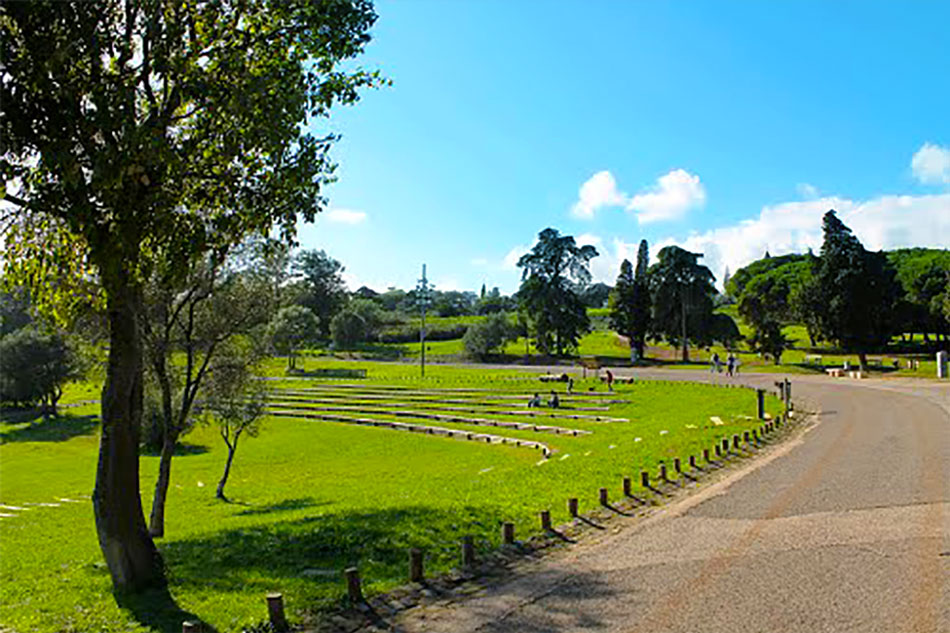
Monsanto Forest Park
The park offers magnificent views of the capital and diverse animal and plant life, along with numerous possibilities for recreation and sport. Having been considered one of the 10 best sites in Europe for picnicking, it has an area of about 900 hectares that make up the largest green area in the city of Lisbon.
The park includes different viewpoints, the Tennis Center of Alvito and especially the restaurant-viewpoint Montes Claros, with amazing views towards the big lake and the estuary of the Tagus.
The vegetation is diverse, despite the clear predominance of stone pine, and the fauna include rabbits, squirrels, small mammals and carnivores, horseshoe bats (a species in danger of extinction) and also birds such as the robin, woodpecker, common buzzard, and many species of owls.
Opening Hours: Open 24 hours -
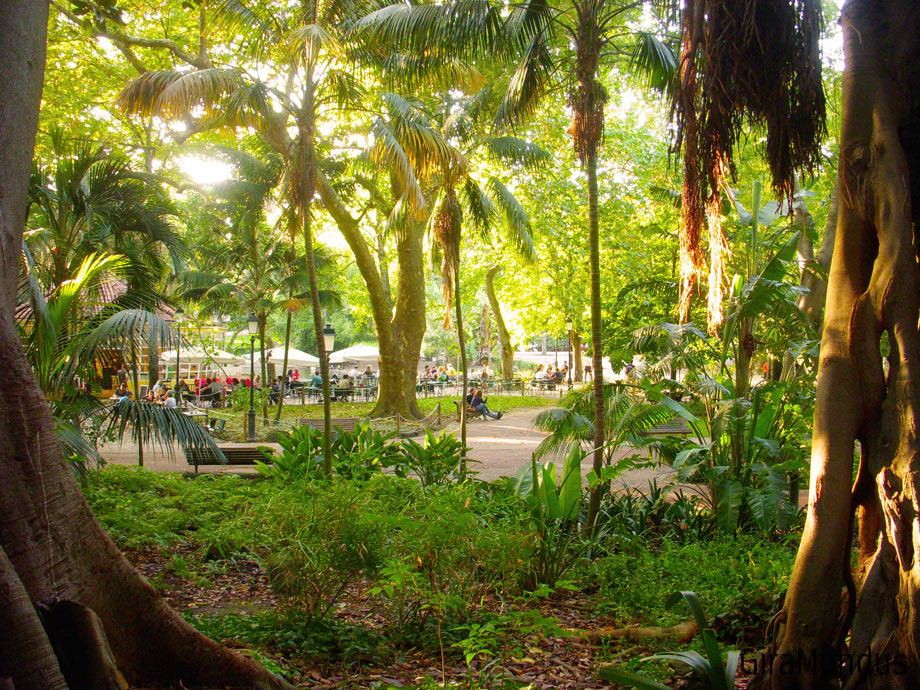
Jardim da Estrela
Officially called Jardim (Garden) Guerra Junqueiro, it has marked Lisbon history by being the first “English-style”park in Portugal.
The terrain features were used to build lakes, one waterfall and cave, imitating nature, and small and beautiful fountains. With several kiosks and cafes is much appreciated for morning walks and evenings with family or friends.
Opening hours: Every day from 7am to 24h -
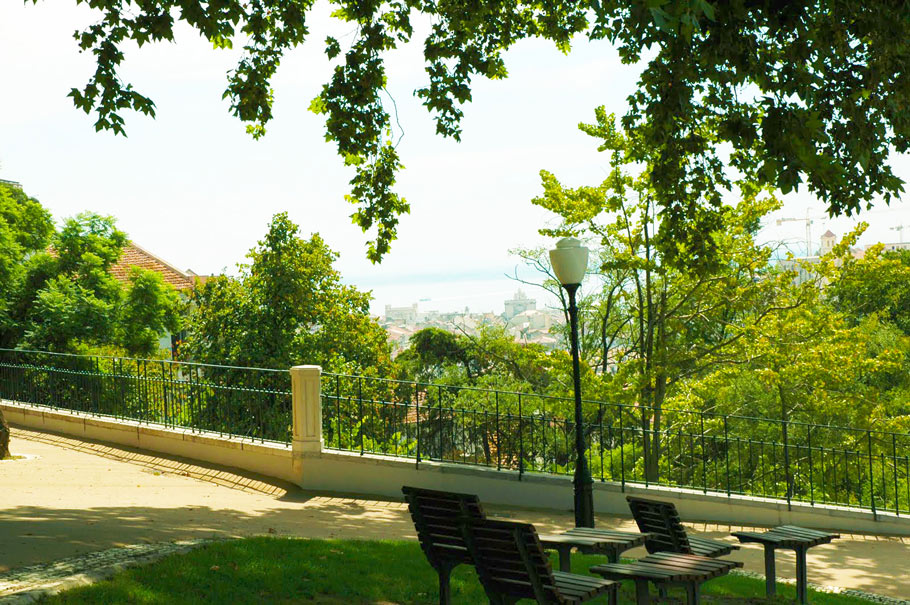
Jardim do Torel
It’s one of the most interesting and unknown green spaces in the city. It is a romantic nineteenth century garden that has large number of flower beds and quiet corners.
With a privileged view over the Liberty Avenue and its western slope, where the Miradouro de S. Pedro de Alcantara stands, it also showcases an interesting view of the Baixa and the Tagus River.
Apart from some statuary, the Garden has benches and loungers for people to rest and enjoy the landscape and the quietness of the place. In January 2010 a kiosk with terrace was installed, serving wine, with snacks, light meals and a bar service. -
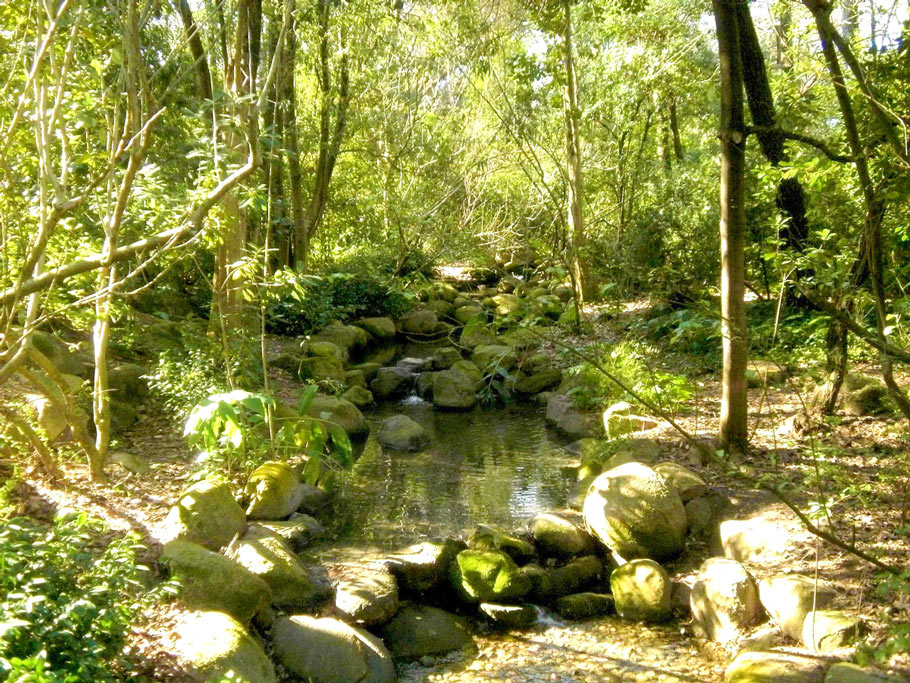
Jardim da Fundação Gulbenkian
The garden of the Calouste Gulbenkian Foundation is one of the outstanding green spaces in the city.
Designed in 1957, it includes a lake, a stream, several trails through bushes and trees, and an outdoor amphitheater where locals and tourists often take the opportunity to spend a different afternoon in the heart of the city. -
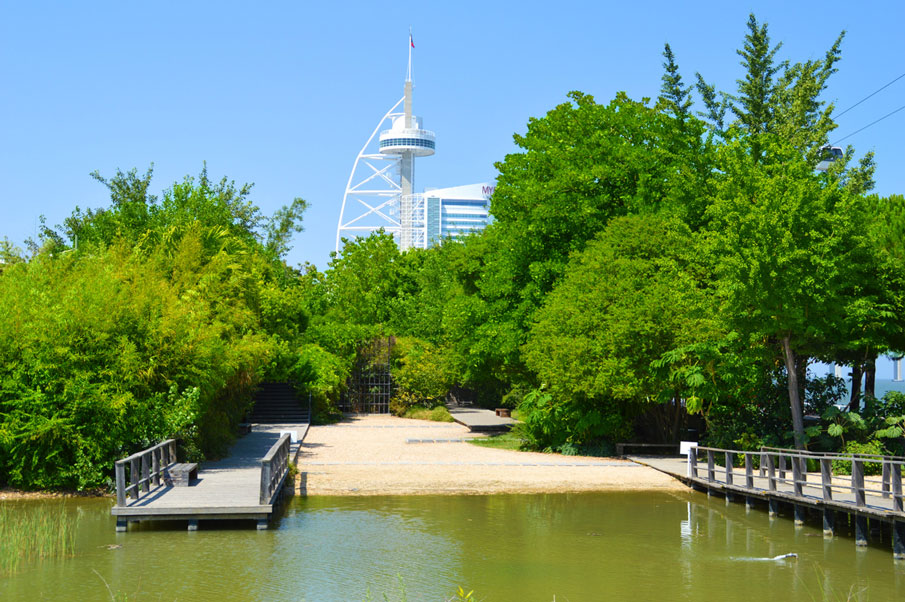
Parque das Nações
The gardens of the Parque das Nações show a careful architectural design, where water is the background theme; gardens line up along the Tagus river, in an east-west axis. The Park occupies about 400 meters.
The sequence and themes of these gardens (Glacier Garden Wave, Garcia da Orta) allow the visitor to contact with the various components of a natural water basin.
Through the display of 2300 plants representing 420 different species, the Jardim Garcia da Orta represents ten different regions of the world through its typical plants and ecosystems, with which Europeans first made contact in the Portuguese Age of Discovery -

Eduardo VII Park and Cold Greenhouse (Estufa Fria)
The gardens of the park are extended from the top of a hill to the roundabout of the Marquês de Pombal, without ever losing sight of the river and the Avenida de Liberdade.
The cold greenhouse (Estufa Fria) has a unique atmosphere created by watercourses and artificial caves, amidst a lush and exotic plant collection. -
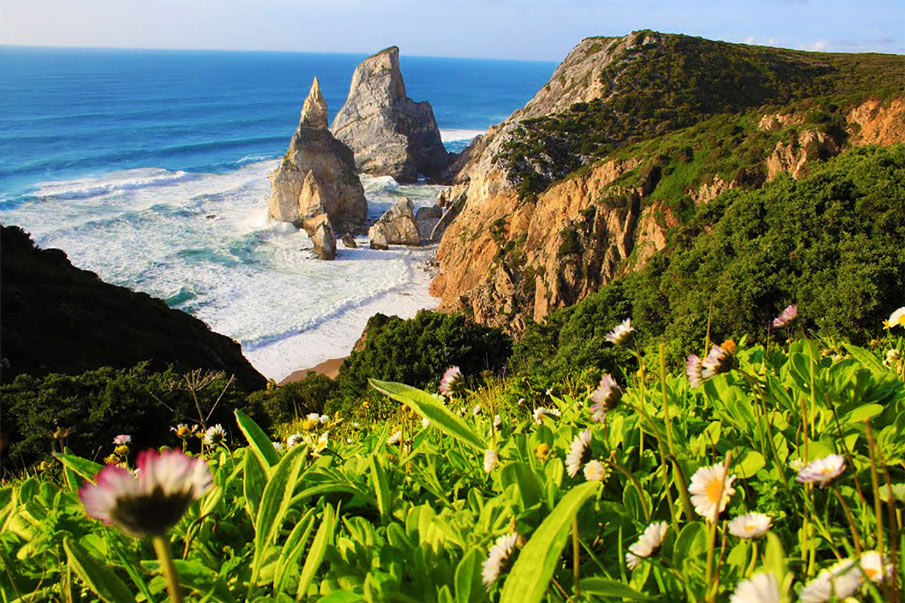
Sintra Cascais Natural Park
With an area of almost 17.000 hectares, the Park covers the dunes of Guincho and the Serra de Sintra, with a multitude of landscapes and environmental assets.
Along the coast, while enjoying the beauty of the dune complex Guincho and the high cliffs of Cabo da Roca and its rich Mediterranean flora, tourists can find the westernmost point of the European continent. -
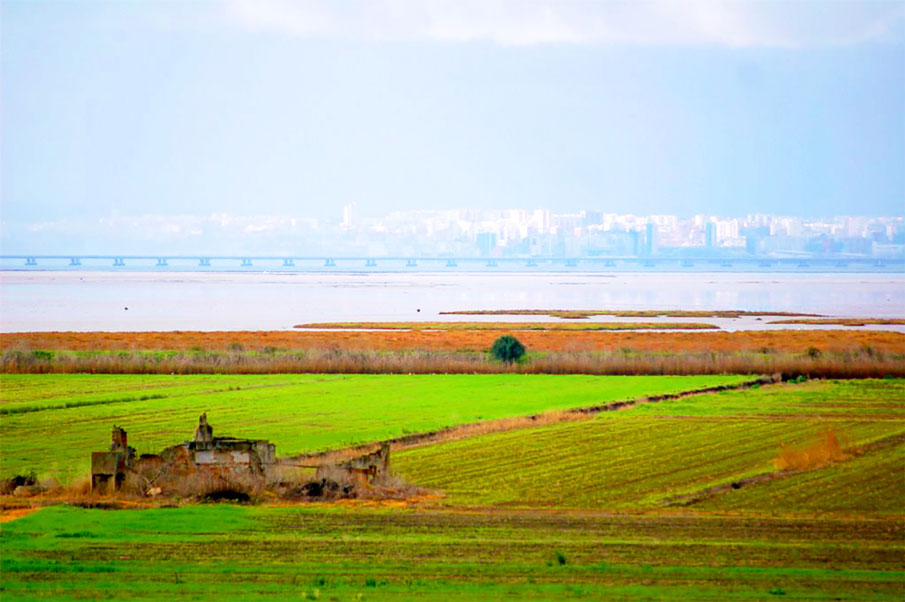
Reserva Natural do Estuário do Tejo e Mar da Palha
More than 14 000 hectares of protected area constitute the largest Portuguese wetland and one of the most important in Europe. The Reserve includes a fully protected 670ha of saltmarsh and 1 500ha of sludge, being a major crossing point for migratory birds and fish.
The flamingos are concentrated here in large flocks, especially in autumn, when they are easily visible on the banks of the river, and when flying in flock provide performances of unseen beauty.
In the SW perimeter of the reserve, in the municipality of Alcochete, there are significant areas of salt marshes which are an important area for feeding, shelter and breeding of birds such as the Stilt, Redshank, Common Greenshank, Black-tailed godwit, Pied avocet, Ruff, Common ring plover and the Dunlin. The reserve can be seen north of the Vasco da Gama bridge, which connects Lisbon to Alcochete through 14 km of magnificent views over the Tagus river, the reserve and the city . -
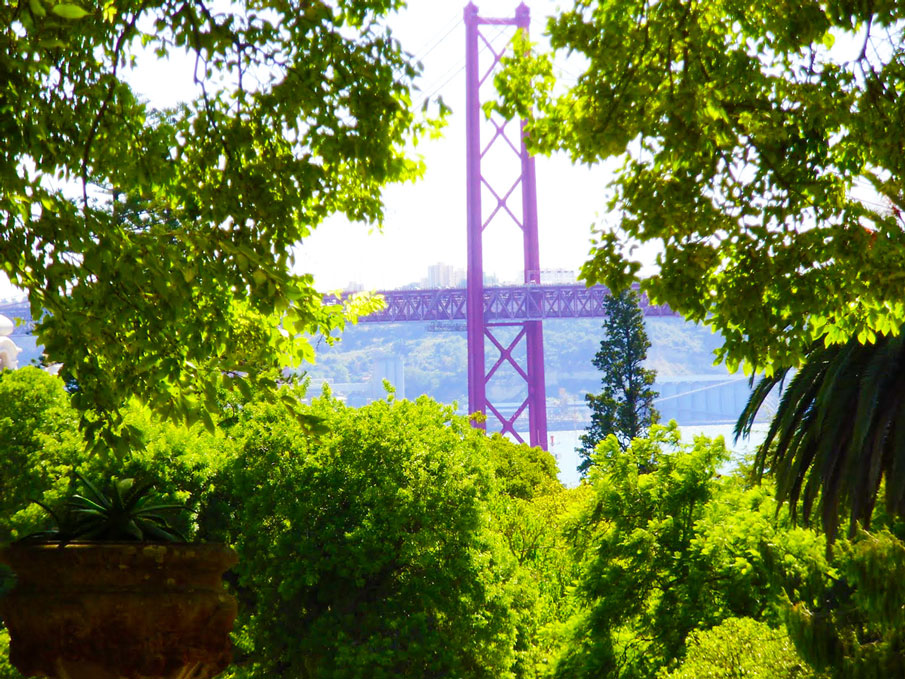
Tapada das Necessidades
This remarkable green space adjacent to the Palácio das Necessidades has one of the oldest cactus gardens in Europe, in the place where once the Portuguese Royal Family took long walks.
The circular greenhouse is one of the existing buildings that can be visited dating back to that time. -
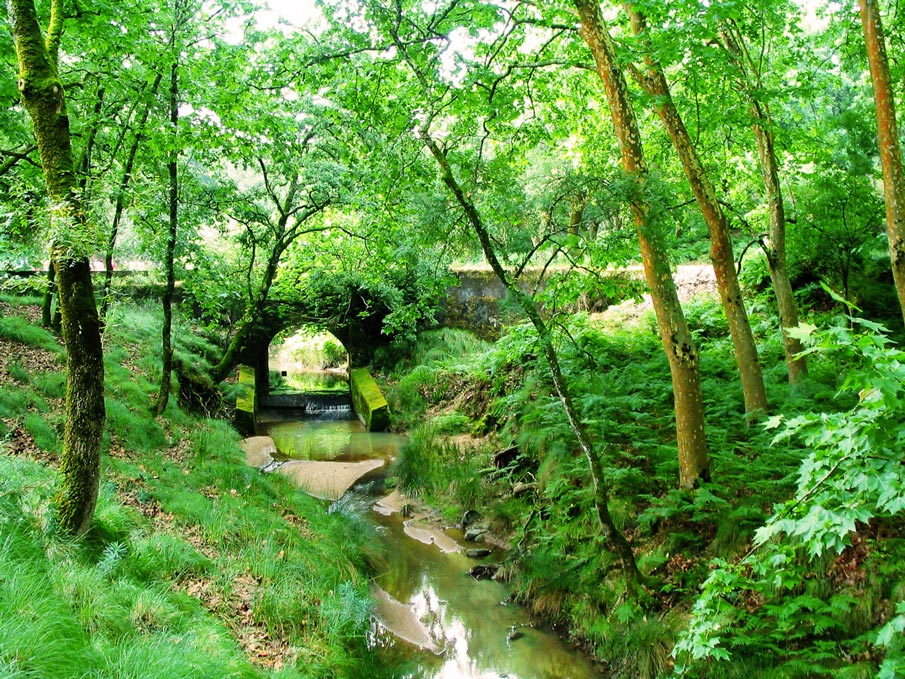
Tapada de Mafra
Formerly a royal hunting reserve, the Tapada de Mafra is composed of 819 hectares of protected area, with a huge variety of flora and fauna, among which roe deer, wild boar and foxes.
Only 35 km from Lisbon, we advise the booking of a guided tour to better understand end fully enjoy the space. -
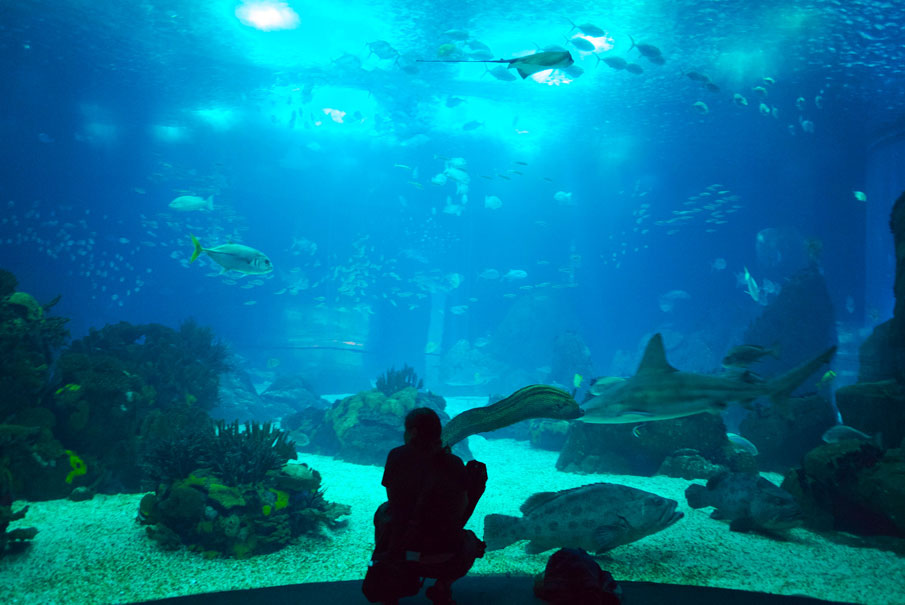
Oceanarium
The Lisbon Oceanarium has just been voted the new TripAdvisor Travelers Choice awards for Zoos and Aquariums around the world as the Best Oceanarium in Europe and second best in the world. Hailed as one of the main national gems, the Oceanarium is one of the most visited places in Portugal by visitors looking for entertainment, culture and leisure.
The proximity to the marine world and its hosts, as the only two sea otters in Europe, sharks, stunning coral reefs among many other creatures, promote a unique and unforgettable experience.
Opening hours: Open every day
Winter: 10h-19h (18h last entry)
Summer: 10h-20h (19h last entry)

-

Santa Justa Lift
From the top of this monument you can find bird´s-eye views of the old town.
No visitor to the city should miss it, except those who suffer from vertigo, as you´ll feel like you´re literally standing above Lisbon. -
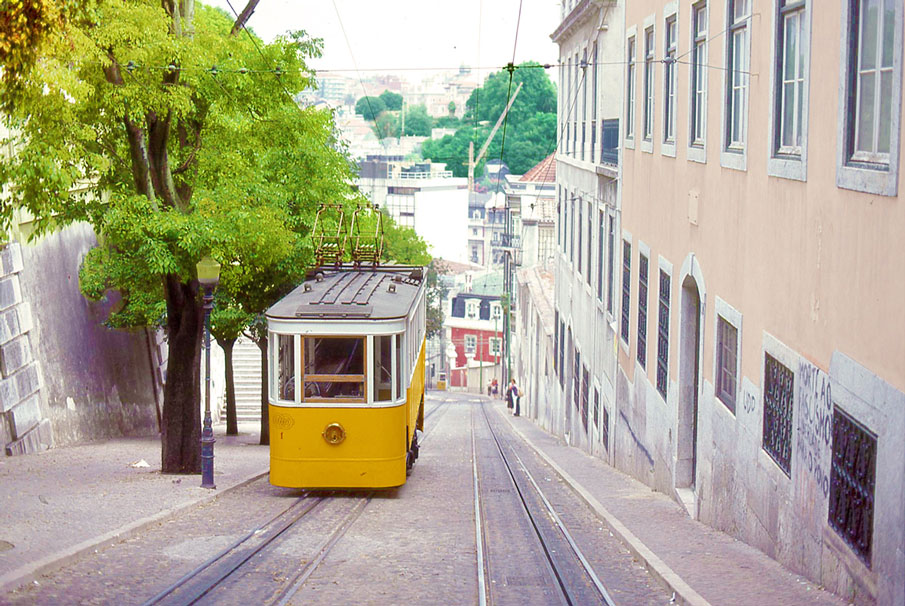
Glória Lift
This tram lift connects the dowtown (Restauradores) to Bairro Alto (S. Pedro de Alcântara) and, besides being the busiest tram of Lisbon, it is also the most accessible to tourists since it is on the right side of the esplanade of S. Pedro de Alcantara, which has amazing views over the center of Lisbon and the Castelo de São Jorge.
Since February 2002 it’s classified as a National Monument and it carries about 3 million people per year. -

Bica Lift
Conecting the Calhariz (Rua de São Paulo) to Rua da Boavista, the Elevador da Bica is classified as a National Monument and it’s one of the tourist landmarks of the city of Lisbon.
Opened in 1892, was designed by Raul Mesnier Ponsard in order to facilitate the day-to-day of people moving in the” city of the seven hills".
It carries 23 people, and only in 1914 did it start operating with electricity. -
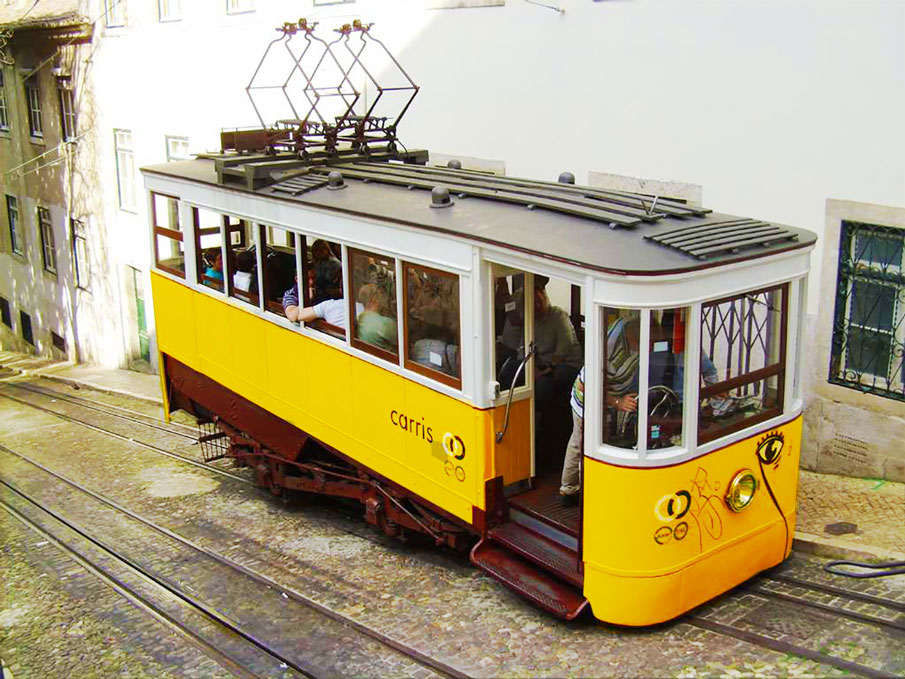
Lavra Lift
It is the oldest tram lift in Lisbon and it connects the Largo da Anunciada to the Travessa do Forno do Torel.
Located in an area of amazing palaces, this tram travels through a hill that, near its top, has a garden – Jardim Miradouro do Torel, remnant of an ancient farmhouse of the eighteenth century, and the Campo dos Mártires da Pátria, an ample square with a leafy garden in the center, around which are aligned several buildings of remarkable architecture, such as the Faculty of Medicine and the Palace of the Patriarchate. -
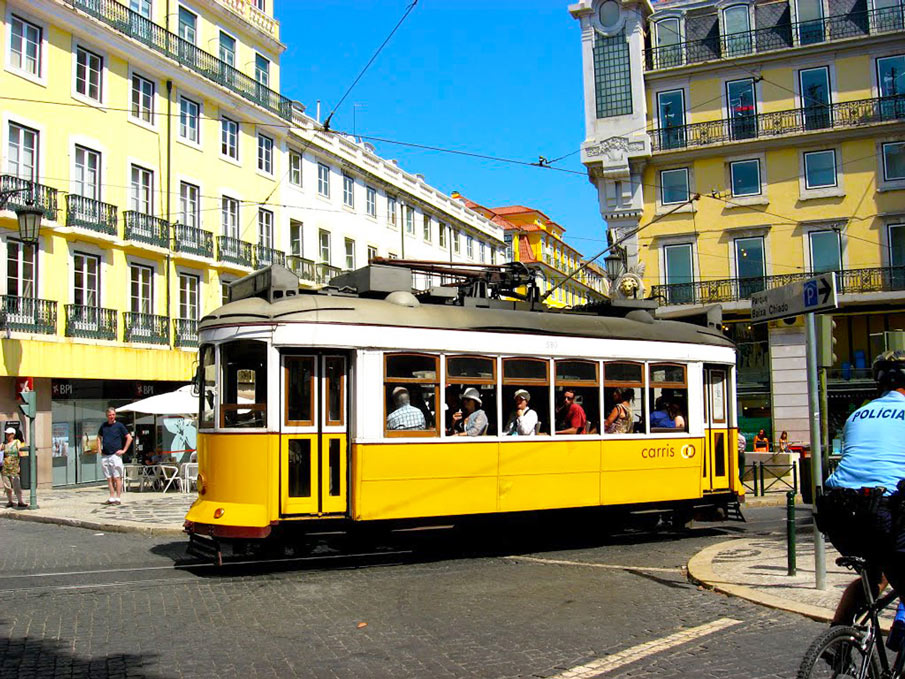
Tram
Being the most picturesque means of transportation of the city, the Trams stand out not only for the interesting paths they do but also because they’re used by Lisbon inhabitants daily for decades now.
There are 5 tram routes, two of which are very interesting for the visitor: the 28 and 15 both go through the city center and have several stops along the historic center of Lisbon. -
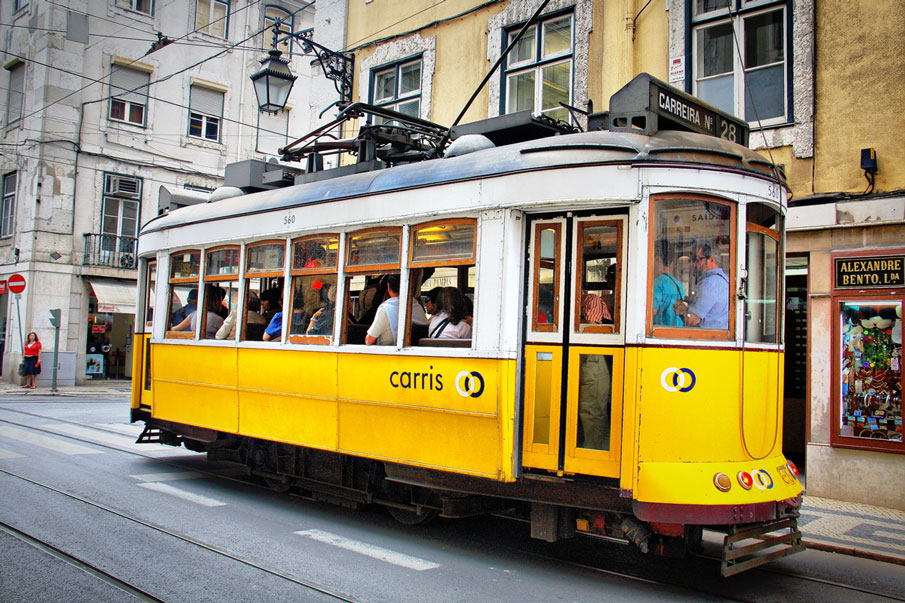
Tram 28
It´s perhaps Lisbon´s most popular activity: a ride back in time over the hills and medieval streets in vintage trams that are still part of the city´s public transportation network.
They go past some of the major attractions in Lisbon. -
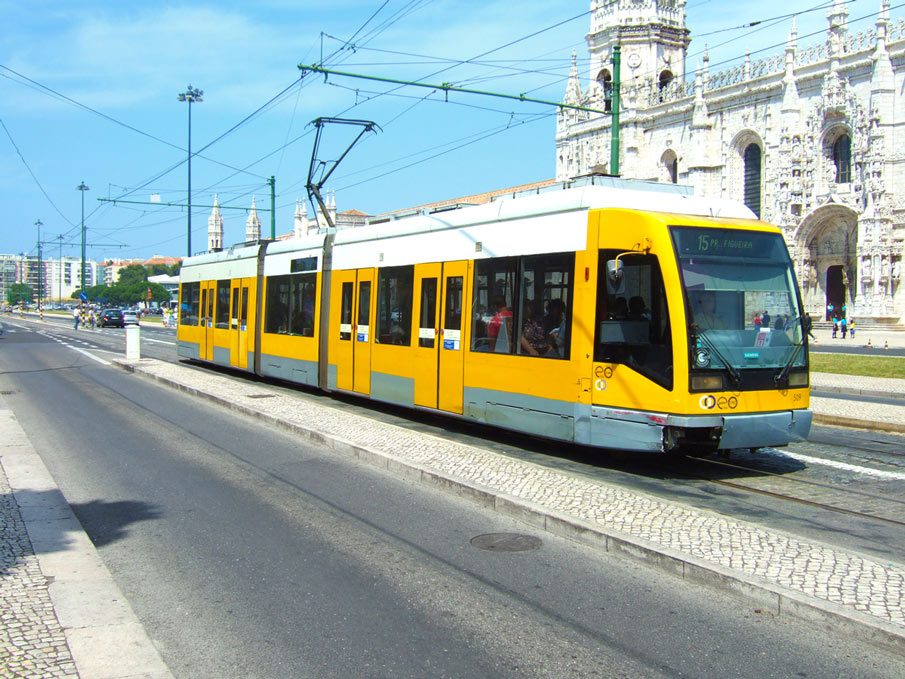
Tram 15-E
The tram nº15 is perhaps less known because it is more modern, although it is essential to visit the Belém area, where you can find the Centro Cultural de Belém and the Discoveries monuments: the Belém tower, the Jerónimos monastery and the Padrão dos Descobrimentos Monument, as well as compelling and original pastéis de Belém (custard tarts).
This tram departs from Cais do Sodré.

-
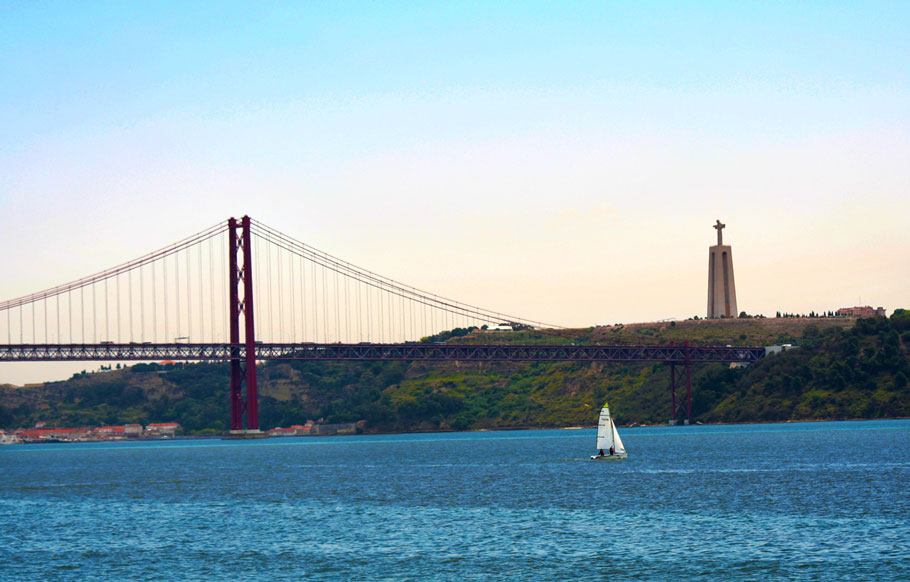
25 de Abril Bridge and Cristo Rei
The Shrine of Cristo-Rei is located in Almada, the south margin of the Tagus River, and is clearly visible from all Lisbon riverfront.
It rises to 113 meters above sea level and consists of a portico 75 meters high, topped by a giant statue of Christ with over 28 meters in height (by the sculptor Francisco Franco de Sousa).
It’s one of the best viewpoints over Lisbon, and was built with a spiritual purpose, inspired by the statue of Christ the Redeemer in Rio de Janeiro.
Opening Hours: every day of the year, with time restrictions in the days of Christmas and New Year. -

Belém Tower
Strategically built on the north bank of the river between 1514 and 1520 for defense of the Lisbon Bar, it’s one of the jewels of the architecture of the reign of King Manuel I.
The Belém Tower is a cultural reference and the symbol of a country in constant dialogue with other cultures and civilizations.
In 1983 it was classified by UNESCO as "World Heritage Site". -
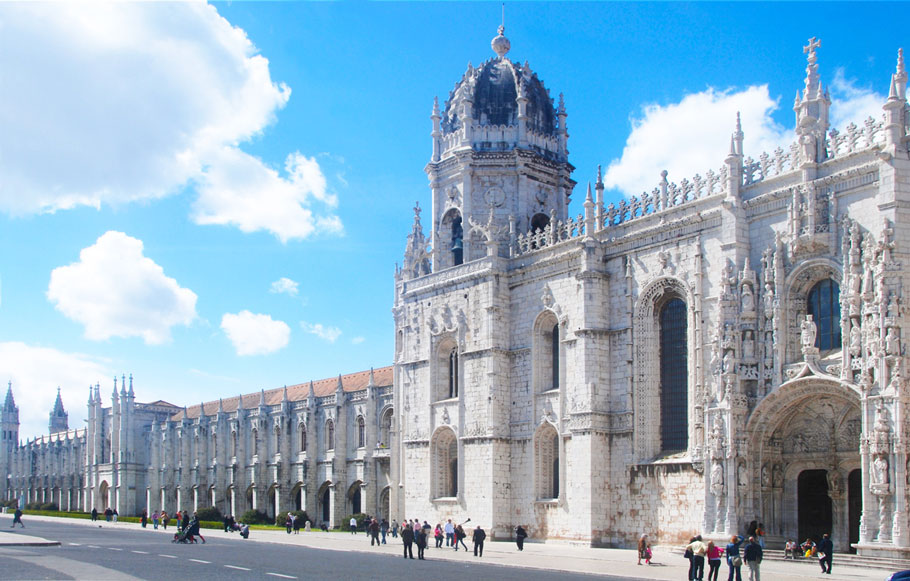
Jerónimos Most
It’s one of the most important national buildings and a UNESCO World Heritage Site.
Touted as the "jewel" of the Manueline style, the Jeronimos integrates architectural elements of late Gothic and Renaissance periods, associating a regal and Christian symbology.
Opening hours: October to April - 10am-17.30 (last entry at 17h)
May to September - 10am-18.30 (last entry at 18h) (closed 2nd Tuesday, January 1st, Easter Sunday, May 1 and December 25) -

Padrão dos Descobrimentos
Lisbon´s Belém monuments and architecture can be admired from the top of this monument, standing on the spot where Vasco da Gama left for his world-changing voyage to India.
Be sure to look down to see visitors standing on the top of the world (a map on the pavement illustrating the routes of the Portuguese explorers). -
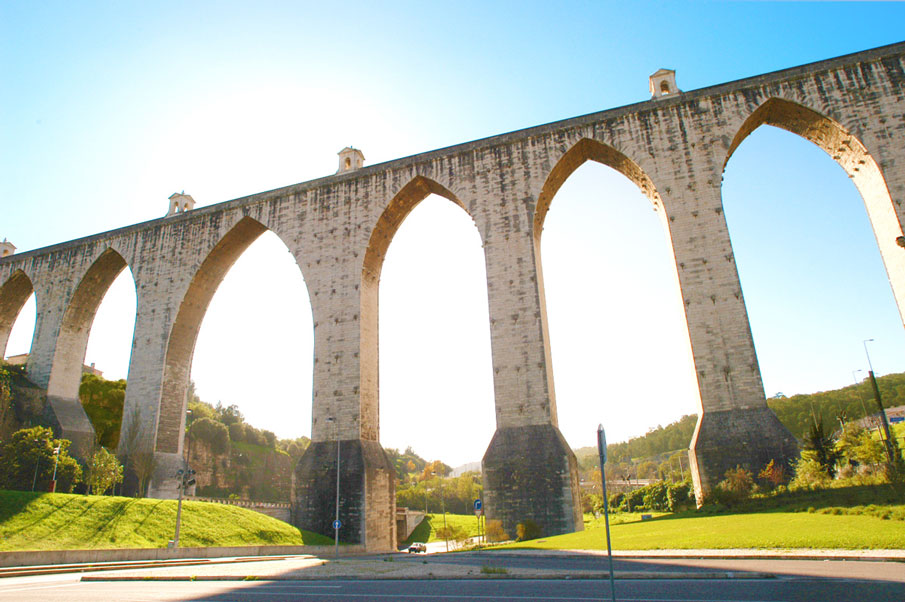
The Aquedut
Classified as a National Monument, the aqueduct is one of the most remarkable works of hydraulic engineering, and with a length of 58 Km it’s one of the largest and most complex systems of water supply in the world.
Opening hours: Fri-Sat 10am-17.30 -
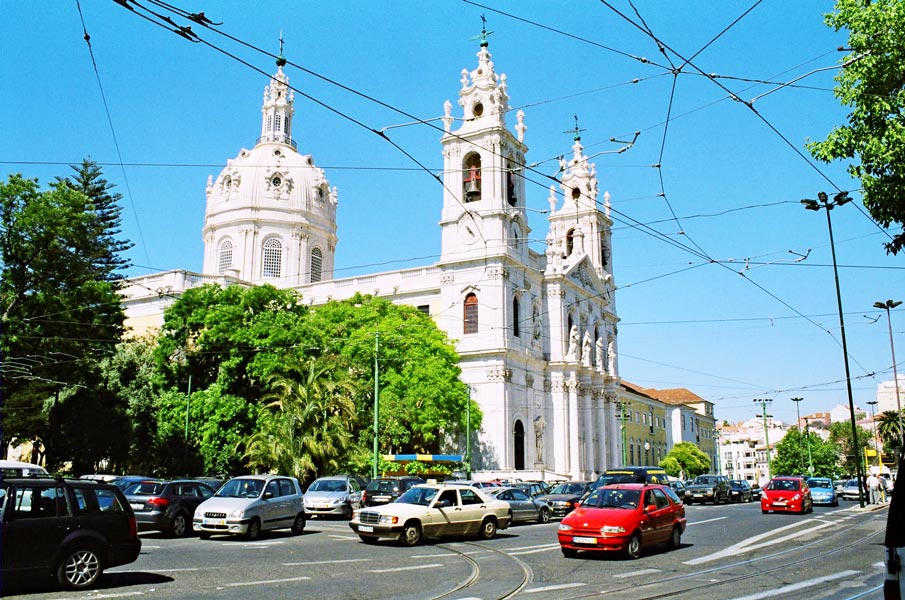
Estrela Basilica
The Estrela Basilica is the pantheon of Queen Mary I, who had it built, and one of the most brilliant achievements of the late Baroque with the inclusion of neoclassical elements.
If you’re visiting, our suggestion is that you come up to the Terrace of the Royal Basilica so that you can fully appreciate the view of the Jardim da Estrela, the castle, the Tagus, the Lapa and Avenida Infante Santo below, with 25 de Abril Bridge in the distance and without people or doves around. -

Carmo Convent
The ruins of the convent of the Carmelite Order, built in 1389, stand in a privileged position overlooking the Rossio (Praça Dom Pedro IV), and very close to the hill of the São Jorge Castle. This site was once the main Gothic church in Lisbon.
In ruins due to the 1755 earthquake, it is still one of the remaining rins left by the earthquake still present in the city.
The monastery eventually became a military outpost and the ruins are now the headquarters of Carmo Archaeological Museum. -
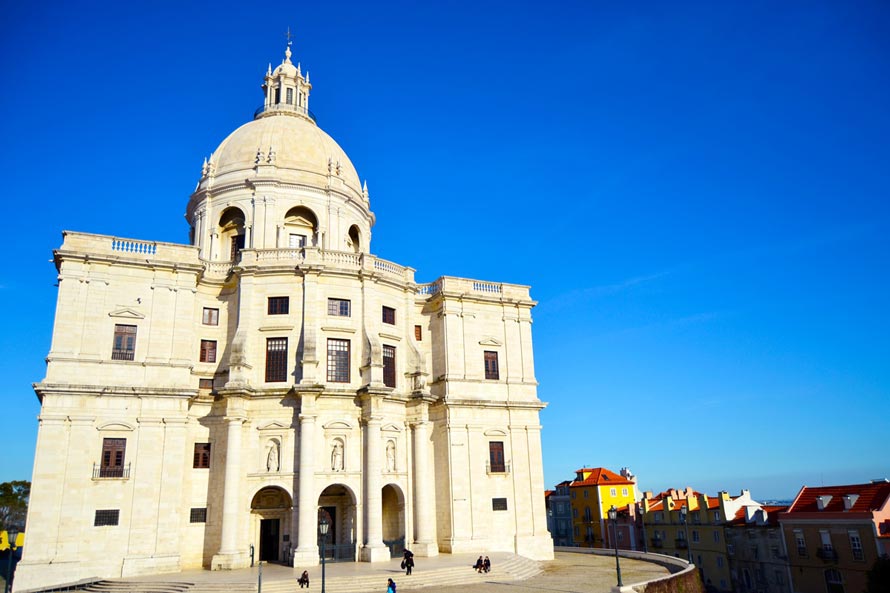
National Pantheon - Santa Engrácia Church
Situated in the historic district of Santa Clara, the National Pantheon occupies the building originally intended for the church of Santa Engracia, welcoming the tombs of the great figures of Portuguese history.
Founded in the 2nd half of the sixteenth century, the building is classified as a National Monument and it’s a referential element in the profile of the city that offers simultaneously privileged points of view for the historic area of the city and the Tagus river. -

São Vicente de Fora Church
The Church and Monastery of São Vicente de Fora is one of the historic buildings of the Portuguese capital, in honor of the patron saint of the city since 1173: San Vicente.
This architectural model would be the basis of the facades of temples built in the Portuguese colonies in Africa, India, Macau or Brazil.
Home to the largest organ of Lisbon, dated 1765, also worth a visit the blue and white tiles with scenes from the fables of La Fontaine, present in the cloisters and monastic dependencies. -
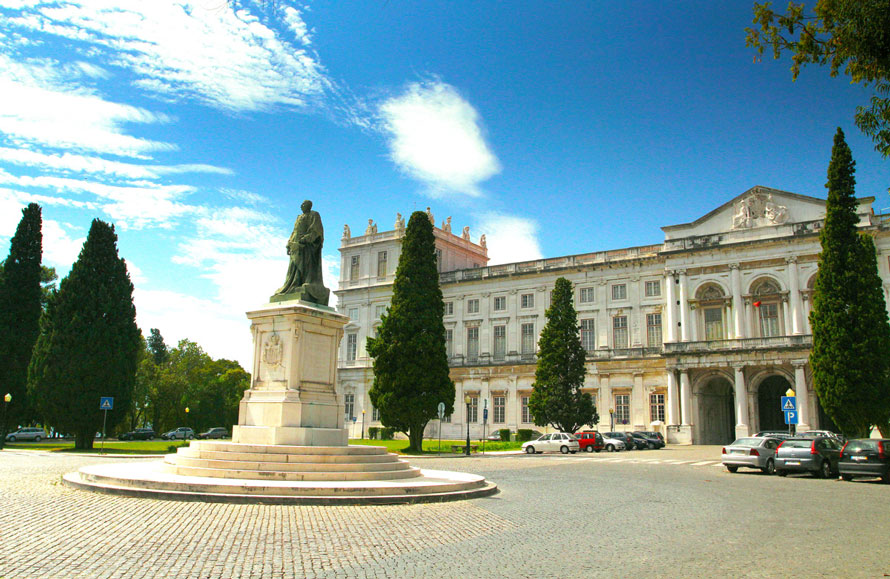
Ajuda National Palace
The Ajuda National Palace is a national monument, was also called Royal Palace of Nossa Senhora da Ajuda (Our Lady of Help) where the Portuguese royal family have resided therein.
As a museum, the palace is especially significant as the Portuguese royal residence of the nineteenth century, integrating art collections dating from the fifteenth to the twentieth century.
Opening hours: From 10.00 to 17.30 (last entry 17.00)
Closed on wednesdays, January 1st, Easter Sunday, May 1, 25 of December. -
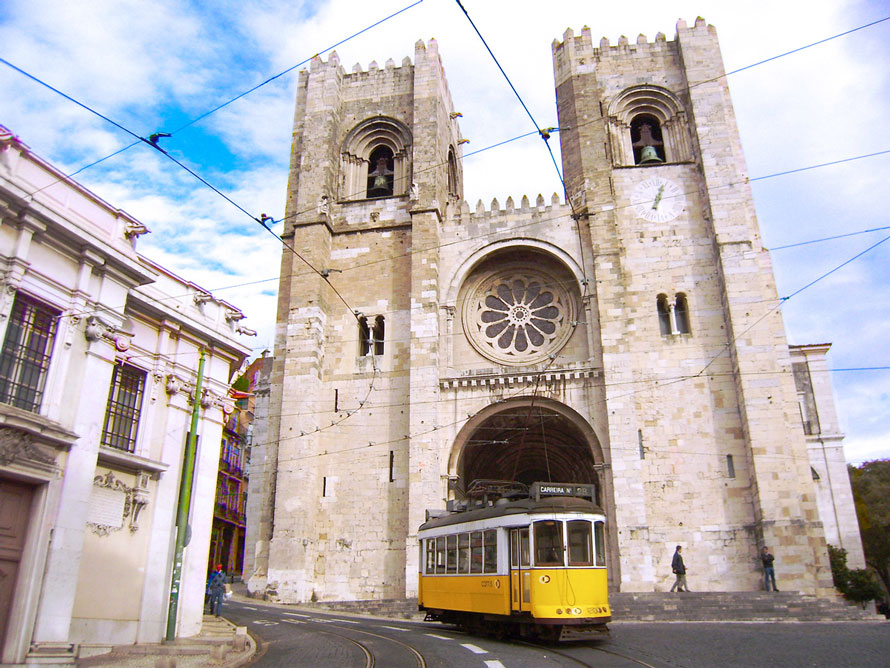
Lisbon Cathedral - Santa Maria Maior Church
Also known as the church of Santa Maria Maggiore, the Cathedral is one of the oldest monuments in Lisbon.
Its construction began in 1150 (where previously stood a mosque), after the Arab conquest of Lisbon by King Afonso Henriques.
It is a mixture of architectural styles and the result of successive reconstructions that includes a rose window and two bell towers adorn its Romanesque façade and a Gothic cloister, with double arches decorated with capitals. -

National Theatre of São Carlos
The Teatro Nacional de São Carlos (National Theatre of Saint Charles) is an opera house.
It was opened in 1793 by Queen Maria I as a replacement for the Tejo Opera House, which was destroyed in the 1755 Lisbon earthquake.
The theatre is located in the historical center of Lisbon, in the Chiado district.


